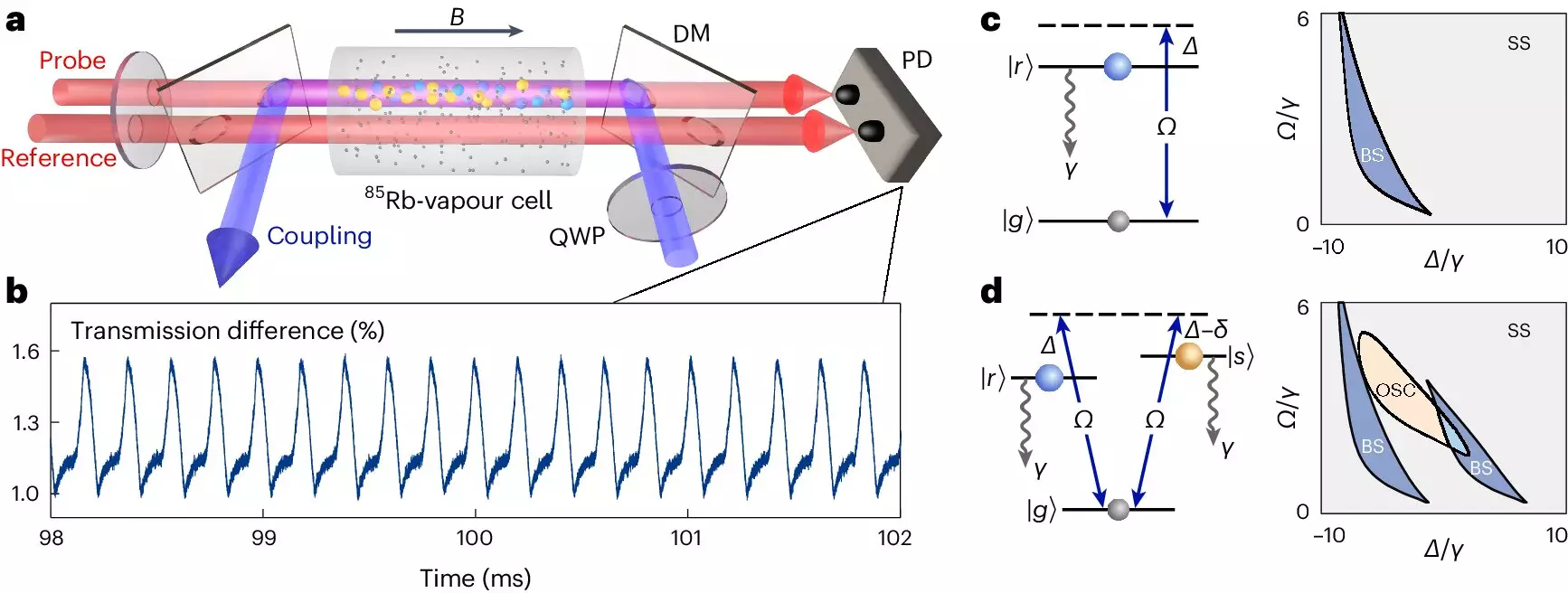The concept of time crystals has been a subject of much debate in the scientific community since Frank Wilczek raised the question in 2012. A crystal is defined as an arrangement of atoms that repeats itself in space at regular intervals. But the idea of a time crystal goes beyond this, suggesting an object that repeats itself not in space, but in time. The possibility of a periodic rhythm emerging independently of any external factors has intrigued researchers for years.
Wilczek’s idea of time crystals has sparked controversy among scientists. Some have argued that time crystals are impossible in principle, while others have attempted to find ways to realize them under special conditions. The debate continued until a groundbreaking discovery was made at Tsinghua University in China, with support from TU Wien in Austria.
The team at Tsinghua University successfully created a particularly spectacular kind of time crystal using laser light and Rydberg atoms. These atoms, with a diameter several hundred times larger than normal, played a crucial role in the experiment. The results of this groundbreaking research were published in the prestigious journal Nature Physics.
Unlike the ticking of a clock, which requires external intervention to set it in motion, a time crystal’s periodicity arises spontaneously. This concept, known as spontaneous symmetry breaking, suggests that the tick frequency of a time crystal is predetermined by the system’s physical properties, while the timing of the ticks is entirely random. This unique characteristic sets time crystals apart from other periodic phenomena.
In the experiment conducted at Tsinghua University, laser light was directed into a glass container filled with a gas of rubidium atoms. The researchers observed that the intensity of light arriving at the other end of the container started to oscillate in highly regular patterns, despite no specific rhythm being imposed on the system. This unexpected behavior led to the discovery of a time crystal.
The key to creating a time crystal lies in the preparation of atoms in a special state known as Rydberg atoms. These atoms have giant electron shells, resulting in the atoms interacting with each other in unique ways when exposed to laser light. By exciting two different Rydberg states in each atom simultaneously, a feedback loop is generated, leading to spontaneous oscillations between the two states. This phenomenon is reflected in the oscillating light absorption observed in the experiment.
The creation of a time crystal opens up a new realm of possibilities in physics research. The self-sustained oscillations observed in the experiment could have practical applications in sensor technology and other fields. By delving deeper into the phenomenon of time crystals, scientists aim to gain a better understanding of the underlying principles governing the behavior of these intriguing objects.
The creation of a time crystal represents a significant milestone in the study of physics. The experimental breakthrough at Tsinghua University paves the way for further exploration into the fascinating world of time crystals and their potential applications in various domains. Frank Wilczek’s visionary idea has now become a reality, sparking new avenues of research and discovery in the field of quantum physics.


Leave a Reply